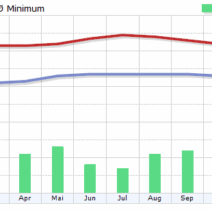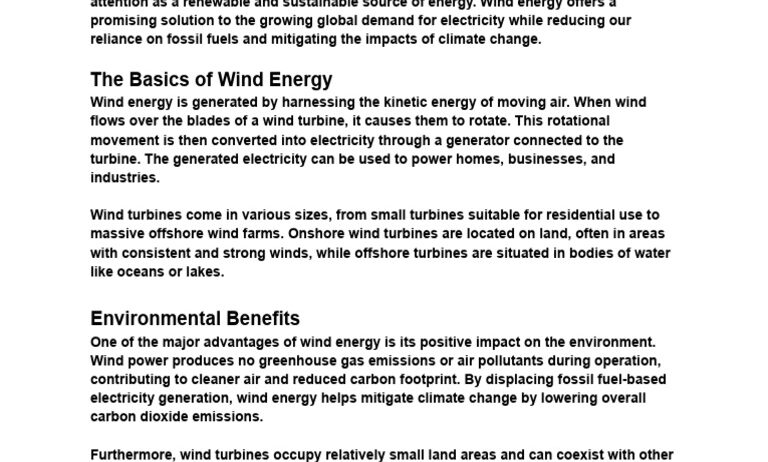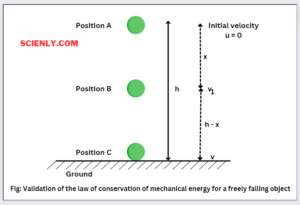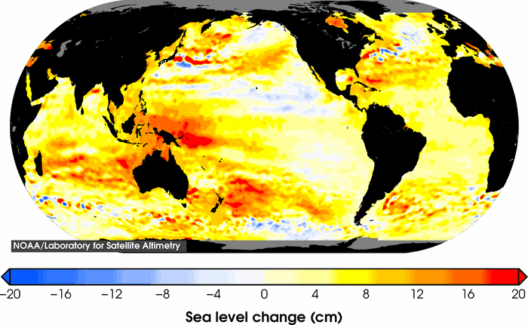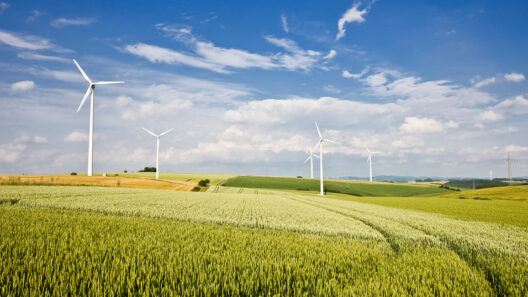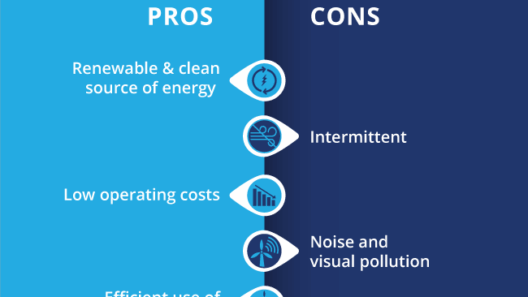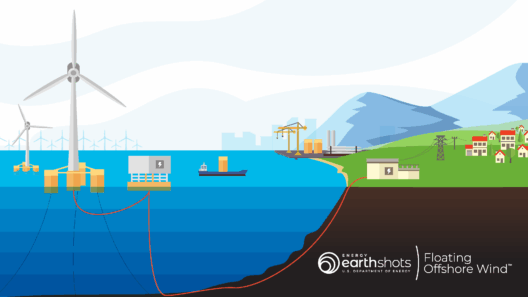Wind energy is often likened to a breath of fresh air—a seamless embrace of nature’s force, harnessed not just for survival, but as an embodiment of sustainable progress. As global consciousness shifts towards renewable energy, understanding how we convert the ethereal currents of the atmosphere into tangible power becomes paramount. The technological dance between nature and human ingenuity reveals a captivating narrative, one that weaves together physics, engineering, and environmental stewardship.
The heart of wind power generation lies in its magnificent turbines. These towering structures, resembling colossal pinwheels, stand sentinel on the landscape. Their capability to convert kinetic energy from moving air into mechanical energy sets the stage for a transformation—almost alchemical in nature. But how does this process unfold? Let’s unravel the intricate layers of technology behind wind power generation.
Throughout history, humans have employed wind’s might for various endeavors, from sailing to milling grains. The modern turbine represents the zenith of this evolution, embodying scientific proficiency and environmental consciousness.
At a fundamental level, the wind turbine consists of a rotor, nacelle, tower, and base. Each component plays a critical role in the orchestration of power generation. The rotor, with its elegant blades designed to capture the wind’s momentum, acts as the initial touchpoint where energy conversation begins. As the wind dances around these blades, the rotor spins. This mechanical ballet initiates a series of transformations that culminate in electricity generation.
Within the nacelle lies the generator—an intricate mechanism where the magic fully materializes. The rotor’s movement turns a shaft connected to the generator, which converts mechanical energy into electrical energy through electromagnetic induction. This phenomenon, pioneered by Faraday in the 19th century, is essentially the dance of electrons; as the shaft rotates, it creates a magnetic field that compels electrons to flow, generating electricity. The precision of engineering ensures that even the slightest gust can translate into measurable output.
To truly appreciate the capabilities of wind energy, we must dissect the type and design of wind turbines. Onshore and offshore turbines showcase the versatility and adaptability of this technology. Onshore turbines anchor themselves firmly on land, exploiting the wind that sweeps across landscapes. Their towering heights can reach up to 600 feet, a modern marvel of engineering. In contrast, offshore turbines rise majestically from the water, harnessing winds unimpeded by terrestrial obstructions. These leviathans of the sea can capture wind currents that are often stronger and more consistent than their onshore counterparts.
The interplay between technology and environmental consciousness raises an important question: What are the considerations for siting wind farms? Location is not merely a matter of convenience; it is a strategic calculus balancing ecological impact and energy production. Key factors include wind resource availability, proximity to existing electrical infrastructure, and consideration of wildlife habitats. Environmental assessments strive to minimize disruptions to local ecosystems while optimizing the yield of renewable energy.
Yet, as much as technology enables us to harness the wind, it also begs the question of scalability. How do we transition from isolated wind farms to a comprehensive energy grid that integrates wind power seamlessly with other renewable resources? The advent of smart grids heralds a revolution in energy distribution, allowing for real-time monitoring and management of electricity flow. This technological leap enables a greater synergy between different energy sources, accommodating fluctuations in wind energy production and ensuring a steady energy supply.
Challenges remain, as wind energy is inherently intermittent. Predicting and managing the variable nature of wind requires innovative solutions and advanced forecasting methods. Energy storage systems, like batteries and pumped hydro storage, emerge as vital players in this narrative, allowing us to harness excess energy generated during blustery days and deploy it when winds die down. In this ecosystem of energy production and consumption, resilience becomes a critical objective.
Importantly, the societal implications of wind energy cannot be overlooked. As communities embrace wind power, they cultivate a sense of ownership and responsibility toward their energy sources. This grassroots involvement not only nurtures local economies through job creation but also fosters a culture of sustainability—one that empowers individuals and communities to champion renewable energy initiatives.
In summation, the story of wind energy is one of intricate design, remarkable technology, and profound societal impact. The turbines capturing the invisible currents not only generate electricity but also symbolize humanity’s aspirational journey towards a sustainable future. As we forge ahead, the importance of understanding the technologies behind wind power cannot be overstated. Each rotation of a turbine blade represents not only a conversion of energy but a commitment to harnessing nature’s forces for the well-being of our planet.
Thus, as we gaze upon these graceful giants dotting our horizons, it becomes evident that we are not merely after energy; we are weaving a narrative of innovation and environmental stewardship, enriched by the very winds that sustain life itself. Indeed, wind energy is more than a renewable resource—it is a testament to our capacity for change and our responsibility to future generations.
